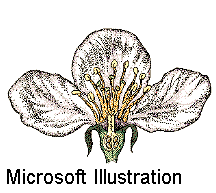
| |
 |
![]()
 Mother Earth News, Sep/Oct 1987
Mother Earth News, Sep/Oct 1987
Bring new pleasures and superior plants to your garden
By Nancy Bubel
Flowers exist to produce seed. The flower's pollen bearing, fertilizing (male) organ is the stamen, which consists of the stalk (or filament) and anthers, the pollen bearing sacs on the tip of each stalk. The seed-nurturing, receptive (female) parts of the flower, called carpels, are composed of the ovary, the egg bearing capsule, the style, the tube leading up from the ovary and the stigma, the pollen-receptive tip. When a grain of pollen lands on a receptive stigma, the grain extends a living thread through the style to the ovary. This unites with a ripe ovule, forming a single living cell - which then begins the multiple divisions that start it on the journey to becoming a tiny but marvelously intricate seed embryo.
Not all flowers contain both male and female parts. Those that do are called perfect flowers. Plants with separate male and female flowers may be either monoecious (the separate blooms occur on the same plant) or dioecious (each plant bears either male or female blooms). Some perfect blossoms are self pollinating. They accept their own pollen without any help from wind or insects. (Some self-pollinate before their flowers even open). These are the easiest kinds of plants from which to save seed, because you don't have to isolate them to prevent them from accepting pollen from other, different, varieties.